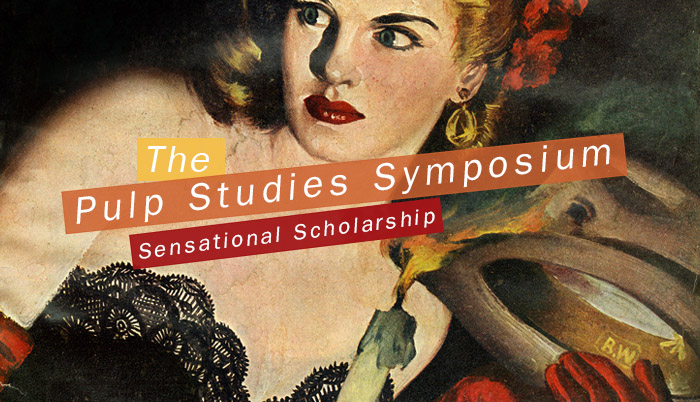Presentation Title
‘A Hidden Race of Monstrous Beings’: Richard Wright, H.P. Lovecraft, and the Pulp Horror of the 1927 Floods
Abstract
1927 was a catastrophic year in American ecological history, with Nevada, Vermont, and especially the Mississippi river experiencing unprecedented floods. In her forthcoming book on the subject, Professor Susan Parrish asserts that the 1927 Mississippi river flood was the most publicly engrossing disaster of the 20th century. Parrish writes, “It is equally a signal event in environmental and media history. Indeed, it was arguably the first time in which the era of the Anthropocene met up with what Guy Debord has termed ‘the society of the spectacle.’” A key text for understanding how the flood was mediated in a literary context is Richard Wright’s short story, “Down by the Riverside,” in which the protagonist, a black farmer named Mann, attempts to escape the flood with his pregnant wife but is conscripted to work on the failing levee.
This paper builds on Parrish’s analysis of “Down by the Riverside” by considering Wright’s background in pulp fiction and his indebtedness to pulp horror. Wright’s story is illuminated through comparison with a story set in the aftermath of the Vermont flood, H.P. Lovecraft’s “The Whisperer in Darkness.” Superficially, the virulently racist Lovecraft would appear to have little in common with Wright, but considering these two stories alongside one another reveals a shared terror at the ways in which these floods marked a change in humans’ relationship with the natural environment and a shared sensitivity to the implications that this change had for the construction of racial identity. In both stories, floodlands become sites of the gothic, as rising waters cause past horrors that were thought to be dead and buried to resurface: Native American folk creatures for Lovecraft, the spectre of slavery for Wright. This paper will argue that both authors employ the aesthetics of pulp horror to represent how a “civilized” notion of humanity, and specifically of whiteness, depended on the stability of a natural environment that the 1927 floods had revealed to be far more tenuous than previously assumed.
‘A Hidden Race of Monstrous Beings’: Richard Wright, H.P. Lovecraft, and the Pulp Horror of the 1927 Floods
1927 was a catastrophic year in American ecological history, with Nevada, Vermont, and especially the Mississippi river experiencing unprecedented floods. In her forthcoming book on the subject, Professor Susan Parrish asserts that the 1927 Mississippi river flood was the most publicly engrossing disaster of the 20th century. Parrish writes, “It is equally a signal event in environmental and media history. Indeed, it was arguably the first time in which the era of the Anthropocene met up with what Guy Debord has termed ‘the society of the spectacle.’” A key text for understanding how the flood was mediated in a literary context is Richard Wright’s short story, “Down by the Riverside,” in which the protagonist, a black farmer named Mann, attempts to escape the flood with his pregnant wife but is conscripted to work on the failing levee.
This paper builds on Parrish’s analysis of “Down by the Riverside” by considering Wright’s background in pulp fiction and his indebtedness to pulp horror. Wright’s story is illuminated through comparison with a story set in the aftermath of the Vermont flood, H.P. Lovecraft’s “The Whisperer in Darkness.” Superficially, the virulently racist Lovecraft would appear to have little in common with Wright, but considering these two stories alongside one another reveals a shared terror at the ways in which these floods marked a change in humans’ relationship with the natural environment and a shared sensitivity to the implications that this change had for the construction of racial identity. In both stories, floodlands become sites of the gothic, as rising waters cause past horrors that were thought to be dead and buried to resurface: Native American folk creatures for Lovecraft, the spectre of slavery for Wright. This paper will argue that both authors employ the aesthetics of pulp horror to represent how a “civilized” notion of humanity, and specifically of whiteness, depended on the stability of a natural environment that the 1927 floods had revealed to be far more tenuous than previously assumed.


